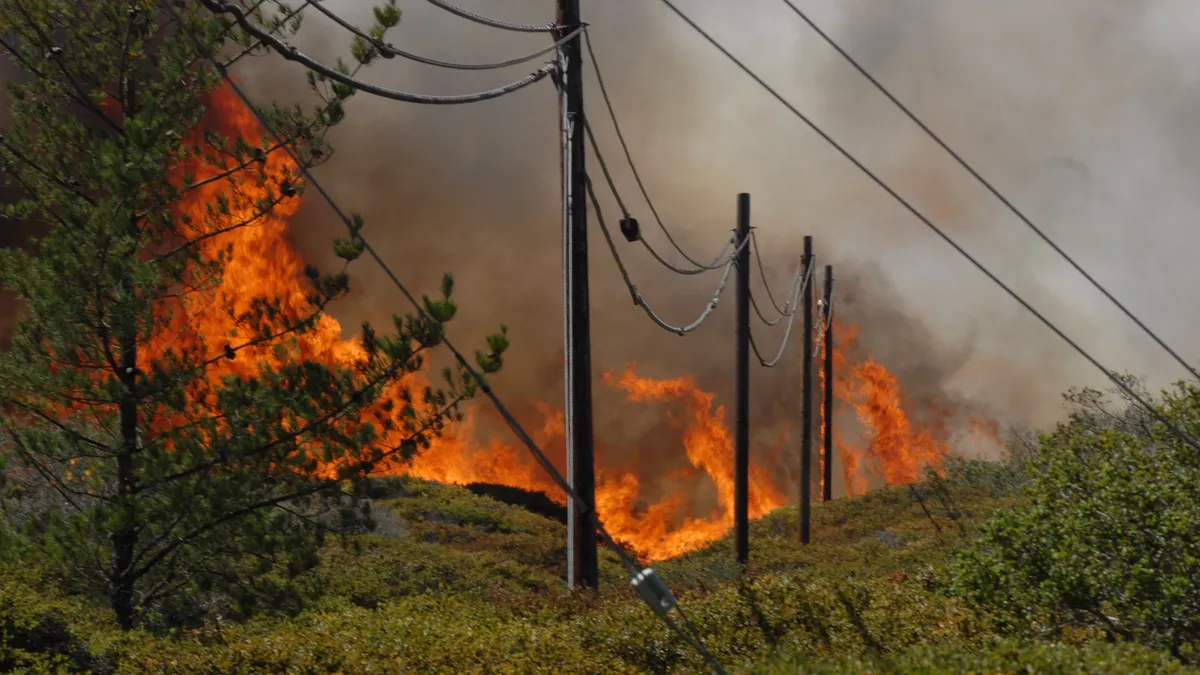Dive Brief:
- The California Department of Forestry and Fire Protection (Cal Fire) on Thursday announced it concluded a private electrical system adjacent to a residence caused the 2017 Tubbs fire in Sonoma County, Calif., that killed 22 people and injured one firefighter.
- The news is a relief to Pacific Gas & Electric investors, as the utility had been under scrutiny for a possible role in sparking the blaze. PG&E shares jumped more than 70% and the stock closed at almost $14 a share.
- The utility is preparing to file for bankruptcy protection and faces billions in potential liability related to other fires. Cal Fire officials also said they did not "identify any violations of state law" related to the Tubbs Fire.
Dive Insight:
The California fire investigator's report sent shares of PG&E soaring Thursday afternoon. But while any good news is a welcome change for investors, the utility remains in financial jeopardy.
Cal Fire concluded three months ago that PG&E was responsible for the 2017 Cascade fire that killed four people, and in total the utility has been found responsible for more than a dozen fires that year. The utility is expected to file for bankruptcy on Jan. 29, as it faces tens of billions in liabilities associated with the 2017 and 2018 wildfire seasons. Add to that, the judge overseeing the company's probation is considering new terms PG&E says could cost up to $150 billion.
PG&E issued a statement following Cal Fire's announcement, acknowledging the uphill battle.
"Regardless of today’s announcement, PG&E still faces extensive litigation, significant potential liabilities and a deteriorating financial situation, which was further impaired by the recent credit agency downgrades to below investment grade," the company said.
Sarah Foss, a legal analyst for Debtwire, told Utility Dive Cal Fire's conclusions are "significant" for the company, though the report "doesn't solve all of their problems."
"The Tubbs Fire caused the most extensive damage of the October 2017 wildfires in terms of property and life so a determination that PG&E was not at fault is important in terms of the total liabilities the company is facing in its bankruptcy case," Foss said in an email.
Foss also said the estimation of the wildfire-related claims is "likely to be one of the most important and contentious issues in PG&E's bankruptcy."
PG&E in its Thursday statement also warned that resolving the legal and financial issues and liabilities related to the 2017 and 2018 wildfires "will be enormously complex" involving thousands of of claims. Sorting through it will likely take years.
On Monday, the utility told federal regulators it expects the bankruptcy proceeding to stretch two years, and that it had secured $5.5 billion in financing to see it through — with an option to extend, if needed.
NextEra Energy has asked the Federal Energy Regulatory Commission to block PG&E from amending or rejecting power purchase agreements with several providers, possibly setting up a fight over jurisdiction between federal regulators and the courts.
Foss says there is case law supporting both sides and that it could become a key issue.
The bankruptcy court would use a "business judgemental" standard that Foss said "is a pretty low standard, and is almost always approved by the court."
"FERC has a more stringent standard," she said, "and looks at whether [a decision] is in the public good."














